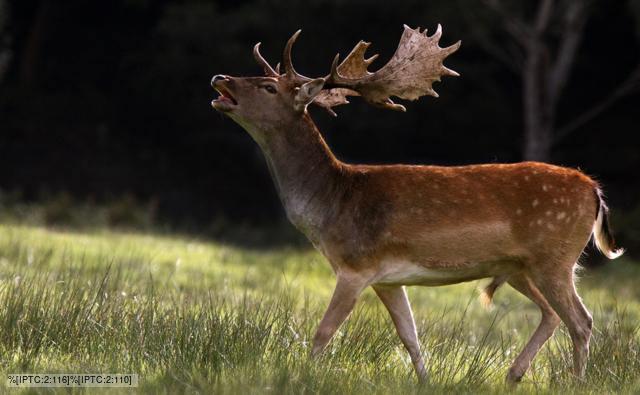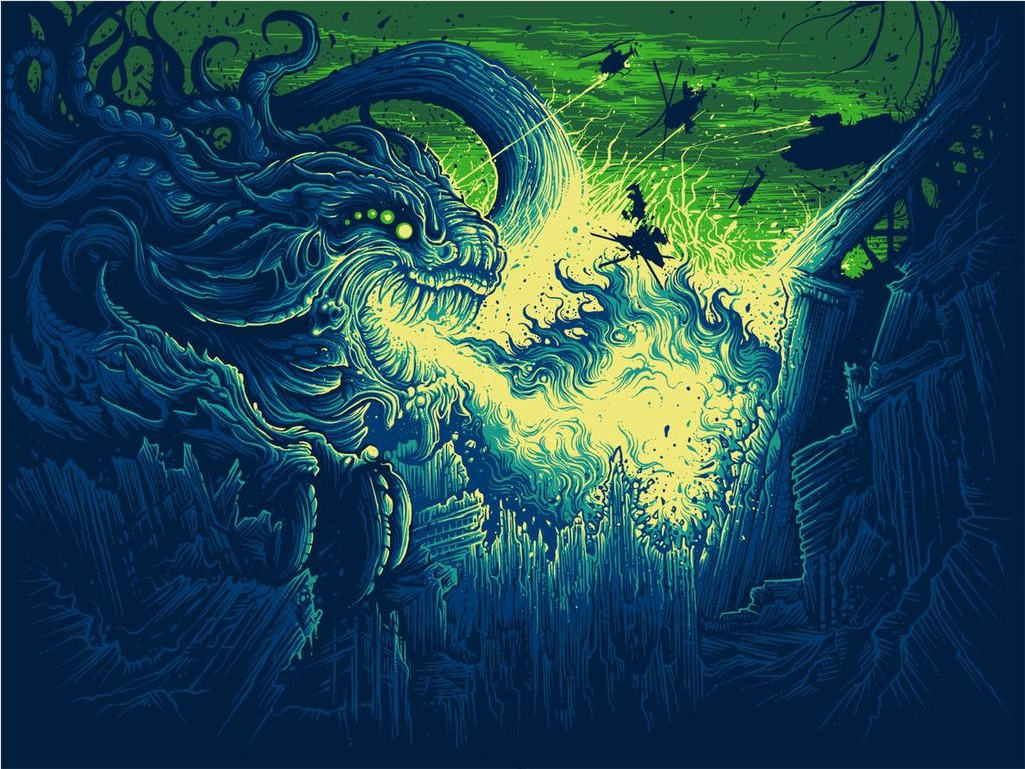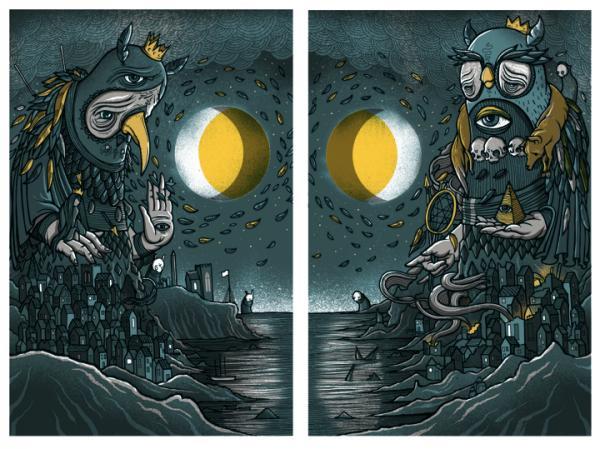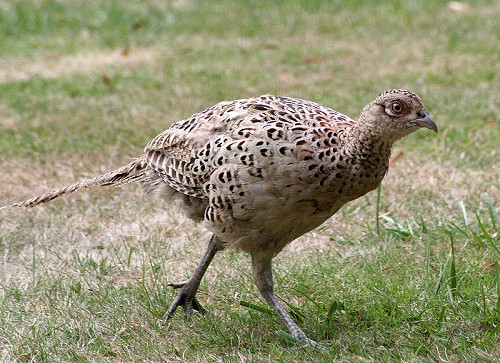In this blogpost, I will be assigning the animals that I wish to highlight in my zine their associated page(s).
I will also be deciding which animals should get a single, or two-page spread.
I have decided not to use all of my animals, only picking the ones that I feel are the most interesting to illustrate, and also display in my zine.
I have been thinking about making my zine's pages quite simplistic in terms of design, and this is to allow for the focus of the reader to be attracted toward the illustrations and the text.
Page 1-2
The first page is of course the page that needs to grab the readers attention, in order for them to keep their interest in either continuing reading, or to hopefully purchase the zine.
 |
| The first pages usually have the most boldest illustrations, in order to catch attention. |
I have found that when I walk into a store, I usually open a chosen book, and glance at a handful of pages, mainly the first page.
This is usually enough for me to decide whether or not I should purchase it, or put it back on the shelf.
I want my first page to reflect on this, and so to make my zine as appealing as possible I want a striking animal/illustration to feature on this page.
Below is a list of animals that I have thought about featuring somewhere in my zine.
- Fallow Deer
- Fox
- Dormouse
- Magpie
- Badger
- Kestrel
- Mute Swan
- Common Toad
- Brown Rat
- Puffin
- Robin
- Shrew
- Wood Pigeon
- Adder
- Red Squirrel
- Raven
- Pheasant
- Perch
- Bass
- Rabbit
- Otter
I really liked all of my illustrations of Puffins that I created earlier on in the developmental stage, and I really feel that the Puffin is a very highly attractive animal, and one that is recognisable by many, commonly being referred to as the 'clown of the sea', and is native to the UK.
It is also a slightly personal reason, as the Puffin is one of my favourite sea birds.
I really feel that the Puffin could help me garner attraction to the zine by putting this animal on page #1, due to the reasons that I stated above.
I think that this animal deserves a two page spread, which means that this animal will cover both pages #1 & #2, and a large amount of space to portray the bird is essential due to the amount of illustrations I have on this animal.
I have assembled a draft of the double page spread in order to see what it may appear like.
These images I feel work together, even though they have slightly different styles, I feel that it works because it showcases a good level of creativity.
I also personally like the montage style.
I want my zine to include some wording on the pages, and this will of course include name of the animal, however I think that it would be best to present the name in a clear format, perhaps using computer font over painted font.
I also want my wording to focus on something related to the Puffin's cultural connection to the UK, perhaps in a slightly witty sense.
For example, since the Puffin is often called the 'clown of the sea', I could perhaps make a pun on the animal, or even tie in a joke to the illustrations.
Page #3
Now that I have created a draft idea of what pages 1-2 will look like, I will now move onto the other pages in the zine, up until the 20th page.
I dedicated the first 2 pages to the puffin, so for my second page, I would like to include an animal that isn't a bird, as I want my pages to be varied between each other.
I want to spread out the different species as much as I can, so that each page offers a new animal, and I feel that this may make the zine more interesting then just slamming animals randomly together.
Going off this, for page 3, I will exclude all animals that are avian, and of course the Puffin, which has been allocated to a page, the most important one at that.
The list below is the animals that could be used on page 3, with birds excluded.
- Fallow Deer
- Fox
- Dormouse
- Badger
- Shrew
- Common Toad
- Brown Rat
- Adder
- Red Squirrel
- Rabbit
- Otter
I would like to perhaps choose a large and majestic animal to be featured on page 3, and out of the list, what appeals to me to fulfil this is the Fallow Deer.
 |
| http://ichef.bbci.co.uk/naturelibrary/images/ic/credit/640x395/f/fa/fallow_deer/fallow_deer_1.jpg < image reference at this link. |
There has been a few Fallow Deer illustrations that I have been working with over the course of the module, and I will display them below.
Page #4-5
Since page 3 used the image of a large animal, I would like to provide a bit of contrast by featuring quite a small animal on page 4.
- Fox
- Dormouse
- Badger
- Kestrel
- Mute Swan
- Common Toad
- Shrew
- Brown Rat
- Magpie
- Robin
- Wood Pigeon
- Adder
- Red Squirrel
- Raven
- Pheasant
- Rabbit
- Otter
All of the animals above are quite small, so all of them are eligible.
The smallest creature on this list the Dormouse, and I have a feeling that this animal might be suited to following the large Fallow Deer.
 |
| http://www.goblincombe.org.uk/wp-content/uploads/2011/11/DSCF2565.jpg < image reference at this link. |
I have produced a few illustrations of the dormouse, however the majority of them I don't like, and I wouldn't want to feature them in my zine.
 |
| A Dormouse illustration that I like. |
 |
| Another Dormouse illustration that I like. |
 |
| A Dormouse illustration that I dislike. |
I want to illustrate this animal a lot, so I may need more space to showcase this particular animal.
Like pages 1-2, I would like to give the Dormouse a double page spread.
Page #6-7
I would like to feature a mammal on this page, and one that is much larger than the Dormouse to provide difference between each page.
I was thinking about giving the fox this particular place in the zine.
I really liked illustrating this animal, especially with the techniques that I experimented with.
I feel as if the style of paint and bold lines works well to portray the Fox's personality, the freedom and wildness of the image reflects the nature of the animal in question in my opinion.
Page #8
I am now entering toward the middle of the zine, and below is a list of the animals that are still needing a place in the zine.
- Badger
- Kestrel
- Mute Swan
- Common Toad
- Magpie
- Brown Rat
- Robin
- Wood Pigeon
- Adder
- Red Squirrel
- Raven
- Pheasant
- Rabbit
- Otter
I wouldn't mind dedicating page 8 to a bird, since I still have a lot of birds that need to be positioned in a fashion that spreads them out, as I don't want two similar species next to each other.
I am keeping closely related animals apart in order to keep a bit of diversity between the pages of the zine.
I would like to perhaps feature the Magpie for this part of the zine, as it is one of my favourite birds, and one that is a common sight across the UK.
 |
| http://resiliencefitness.com/wp-content/uploads/2013/09/magpie.jpg < image reference at this link. |
The Magpie is a member of the crow family, and I know that there is a good amount of folklore behind this animal in particular.
I have yet to produce any illustrations of the Magpie, however I am currently working on one.
Page #9
For page 13 the list again reduces, and I would like to perhaps move onto featuring a mammal on this page.
The mammals that are yet to be assigned places, are highlighted as yellow in the list below.
- Badger
- Kestrel
- Mute Swan
- Common Toad
- Brown Rat
- Shrew
- Wood Pigeon
- Red Squirrel
- Raven
- Pheasant
- Otter
Out of this list, there is one particular mammal that appeals to me the most, and that is the Badger.
The badger is Britain's largest land predator, and is an animal that has really stunning, and interesting features.
 |
| http://i.telegraph.co.uk/multimedia/archive/02087/badger_2087377b.jpg < image reference at this link. |
I have created quite a few illustrations of the Badger, however there are only two that I am happy with using in the zine, for the Badger's feature.
Page #10
Page #10 is at the halfway point of the zine.
Once again, I will be excluding birds from this page, because I want to keep orderly diversity between the animals in the zine.
With the elimination of selecting a bird for this page, my choice of animal has once again become shorter.
- Badger
- Common Toad
- Brown Rat
- Shrew
- Adder
- Red Squirrel
- Rabbit
- Otter
The Rabbit really stands out to me, and I think that it would be a good animal to mark the halfway point of the zine.
Since I am really happy with some of the illustrations that I have produced for the rabbit.
 |
| http://www.nextuplocal.com/CMSFiles/456/rabbit-.gif < image reference at this link. |
Below are a few illustrations of the Rabbit that I have already illustrated.
Page #11
For page #11, I have out of the following list to choose.
- Badger
- Kestrel
- Mute Swan
- Common Toad
- Brown Rat
- Shrew
- Wood Pigeon
- Adder
- Red Squirrel
- Raven
- Pheasant
- Otter
I am really excited to work with the imagery of the Adder, so I would like to give this animal a place in the zone that has a double page spread.
 |
| http://upload.wikimedia.org/wikipedia/commons/2/28/Loch_Shin_adder.JPG < image reference at this link. |
I have had a lot of fun in illustrating this animal, and it is nice to look at a creature that is quite unique amongst the other animals in my zine.
The Adder is the only animal featured in my zine, that is a reptile, and this makes the creature very different, and perhaps a bit more interesting.
 |
| Not as happy with this one, but it was one of my practise illustrations, that lead up to the more refined versions. |
I feel that the Adder is quite a dark animal, and is one that may come across as dangerous, and almost evil in a sense, as snakes often are looked upon as nasty, and things from nightmares.
Snakes are a common fear for many, and I may want to highlight this, perhaps via the use of colour, i.e, giving this page a dark background, or arranging the illustrations that I choose in a way that enhances their traits.
Pg #12-13
For page #12 and #13, I wanted to focus on a fish for a change, and I decided to choose one that is found across the UK, and is heavily sought after by fishermen.
This animal in particular is the largemouth Bass.
 |
| http://www.agfc.com/speciesPhotos/fish_bass_largemouth.jpg < image reference at this link. |
The Largemouth Bass is actually a species that originated from the Americas, and was brought over to the UK, although not a native species, it is one that has fully integrated itself into the environment.
I have not yet illustrated this animal, however I am working on it.
Page #14
Lately I have been spending a lot of my time working on illustrations of mammals, and I have noticed that I have been particularly enjoying working with the imagery of rodents.
I would like to feature another rodent in my zine due to my enjoyment in working with the rodents.
Out of the list of animals that remains, there are two rodent species left for the choosing, and those are the Red Squirrel, and the Brown Rat.
- Kestrel
- Mute Swan
- Common Toad
- Brown Rat
- Wood Pigeon
- Red Squirrel
- Raven
- Shrew
- Pheasant
- Otter
I much prefer illustrating the smaller rodents, so I really want to give the Brown Rat a place in my zine.
 |
| http://www.batconsultancy.co.uk/brown_rat.jpg < image reference at this link. |
 |
| http://www.wildaboutbritain.co.uk/pictures/data/6/Rattus_norvegicus_Brown_Rat_0006.jpg < image reference at this link. |
Below are a few of my Rat illustrations that I wish to showcase.
Page #15
For page 15, I originally wanted to give to the rat, as part of a double page spread for pages 14 and 15. However, I decided to include more marine animals, and so I wanted to cut the double page spread short, and designate the rat to just one page, whilst allowing for a more diverse range of animals.
Due to my success with page 12 and 13, I wanted to include another fish since I had a lot of fun illustrating this particular species, and so after looking up British native fish, I ended up taking an interest in the Perch.
 |
| http://www.gofishing.co.uk/upload/15142/images/WYE%20PERCH%202LB%208OZ.jpg < image reference at this link. |
I wanted to create a minimum of one illustration, but I wanted my illustration to be of a very high quality.
Page #16-17
For page 16 and 17, I took a lot of interest in the Shrew, and I have produced a few illustrations of this animal, which can be seen below.
The Shrew is often found in such habitats as fields, and woodland areas.
The Shrew is a common sight in the UK, and is a species that is commonly adored by many nature lovers due to its cute appearance.
Page #18
For page #18, I have decided to feature the Blue Tit as my showcased animal.
The Blue Tit is a staple garden bird, seen across the year.
.jpg) |
| https://www.reading.ac.uk/web/MultimediaFiles/blue_tit_(1).jpg < mage reference at this link. |
- Kestrel
- Mute Swan
- Common Toad
- Wood Pigeon
- Red Squirrel
- Raven
- Pheasant
- Otter
Page #19-20
For page 19 and 20, I wanted to showcase an animal that would be fitting for the closing of the zine. Straight away I thought about the Swan, due to its connections with royalty, its majesty, and its graceful beauty.
- Kestrel
- Mute Swan
- Common Toad
- Wood Pigeon
- Red Squirrel
- Raven
- Pheasant
- Otter
I have produced a number of different Swan illustrations, and I will detail these below.
---------------------------------------------------------------------------------------------------------------------
With all of the pages now planned, I feel that I am ready to create the zine that I have been working on for so long.
Over the next few weeks, I will be developing the zine, and this will lead to the production of the actual zine.
Thomas.




























































.jpg)




